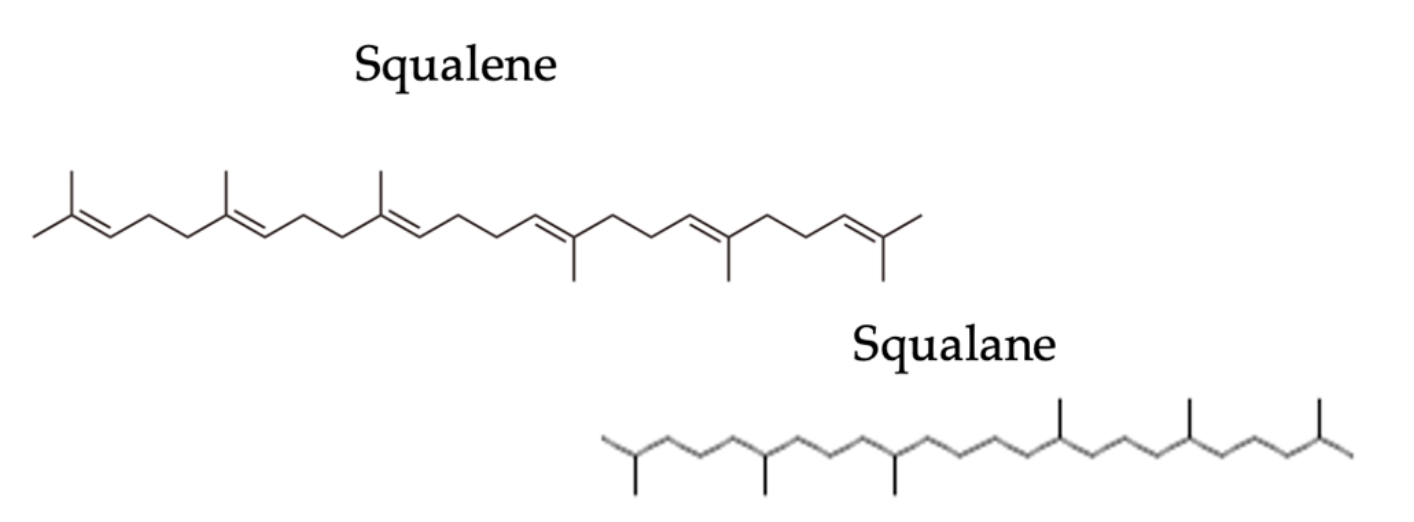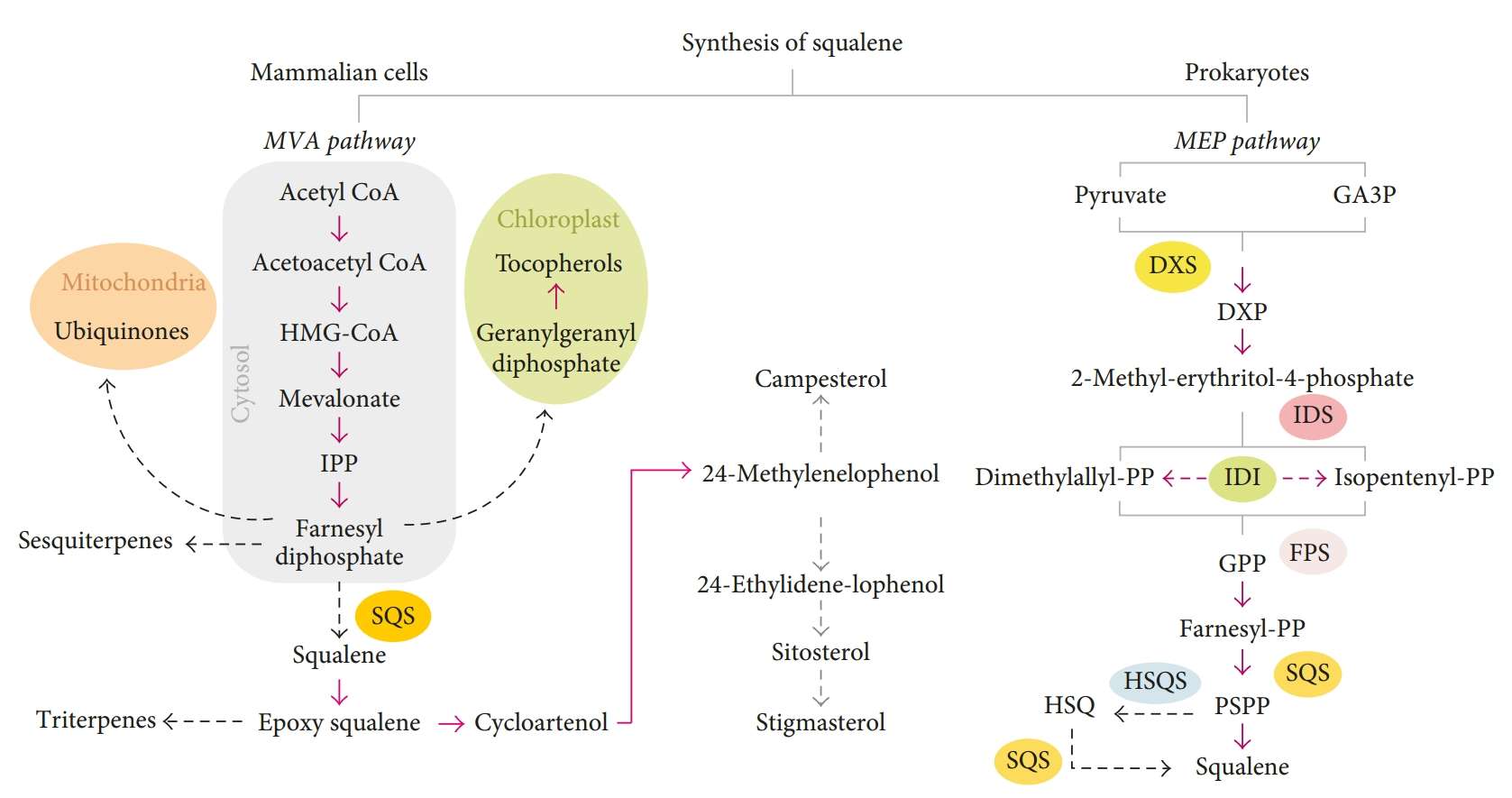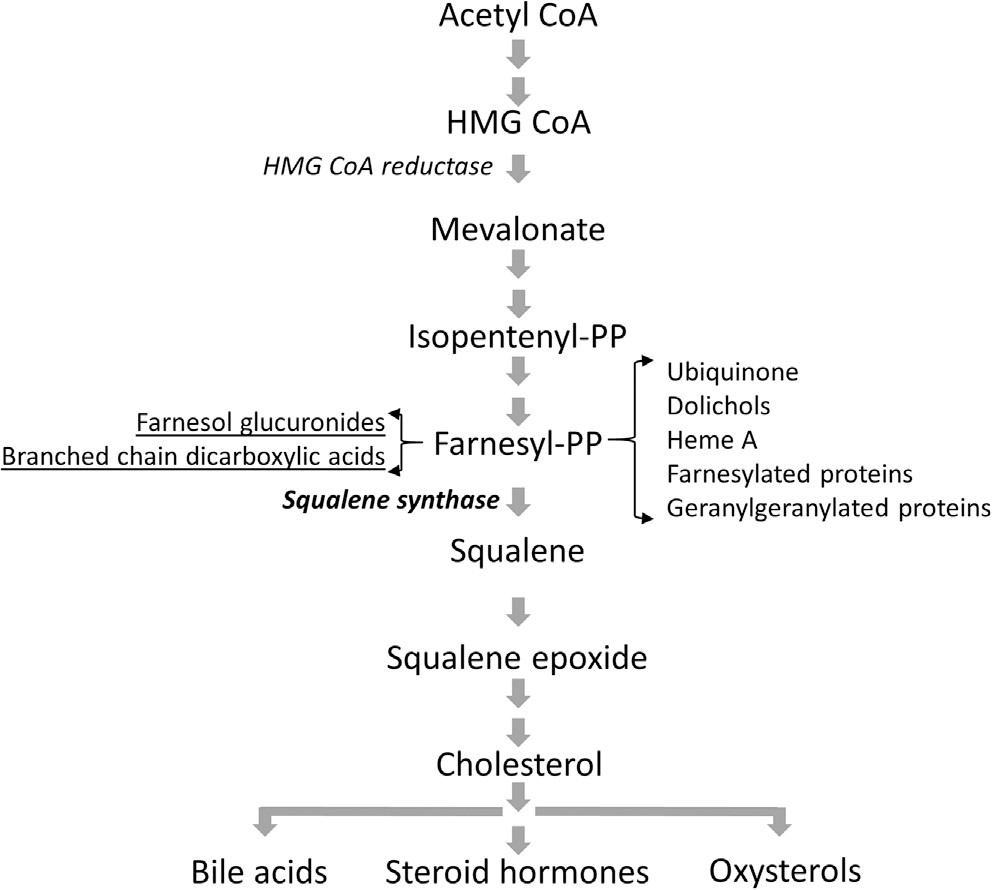As a pivotal research direction in dermatology, squalene holds vast promise in skincare and therapeutic interventions. Creative Biolabs is dedicated to offering comprehensive squalene-related products and services, contributing to our clients' endeavors in basic research or preclinical assessments.
Squalene, an unsaturated hydrocarbon precursor of sterols, composed of six isoprene units, stands as a crucial step in cholesterol biosynthesis. It constitutes a significant component of skin surface lipids, alongside other lipids, forming a major part of sebum.
Squalene is a non-cyclic triterpene consisting of six isoprene units, with all six double bonds in a trans configuration, rendering it highly unstable and prone to oxidation.

Squalene in the body primarily derives from two sources: dietary intake and endogenous synthesis. Squalene synthase (farnesyl diphosphate farnesyl transferase 1; FDFT1) catalyzes the conversion of two molecules of farnesyl diphosphate (FPP) into pre squalene diphosphate, which further converts into squalene through a two-step reaction, and can subsequently transform into cholesterol and other sterols.
 Fig.2 Squalene synthesis.2
Fig.2 Squalene synthesis.2
Upon ingestion or synthesis, a portion of squalene binds to very low-density lipoproteins, widely distributed in tissues or organs such as adipose tissue, skin, lymph nodes, and liver. Another portion undergoes demethylation and chemical bond rearrangement to eventually form cholesterol.
As a long and highly unsaturated hydrocarbon compound, squalene serves as a natural lubricant with high permeability. Its main functions include:
 Fig.3 Gene structure of FDFT1.3
Fig.3 Gene structure of FDFT1.3
As a vital constituent of the skin, squalene plays a crucial role in maintaining skin health. Abnormalities in its function or content are associated with many diseases.
 Fig.4 Isoprenoid/cholesterol biosynthesis by squalene.4
Fig.4 Isoprenoid/cholesterol biosynthesis by squalene.4
As a leading entity in the biosciences domain, Creative Biolabs is committed to providing squalene-related services based on cutting-edge scientific research and looks forward to amalgamating it with the burgeoning field of stem cell research. Our services will focus on delivering tailored solutions to our clients, including synthesis, analysis, and mechanism exploration, aiding in a deeper understanding of its potential applications in skin care and disease intervention. Please do not hesitate to contact us for robust support.
References
For Research Use Only. Not For Clinical Use.